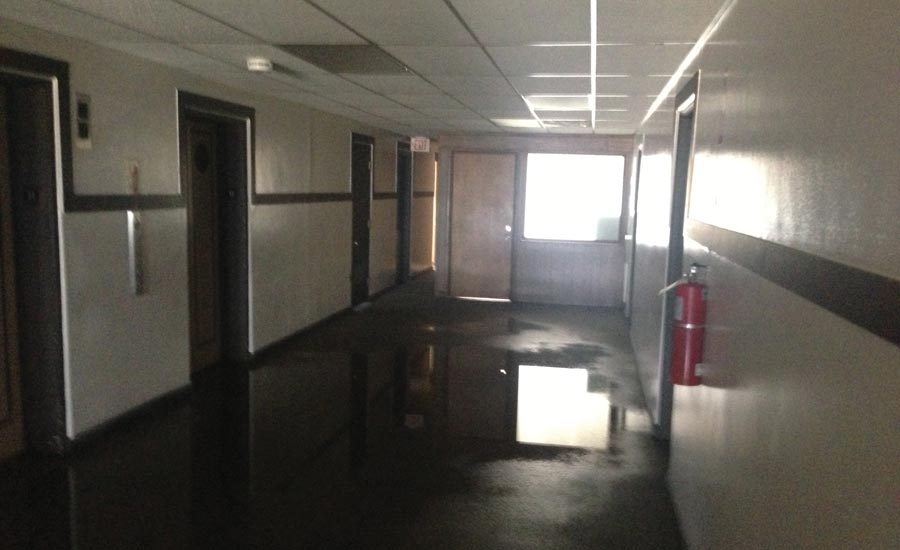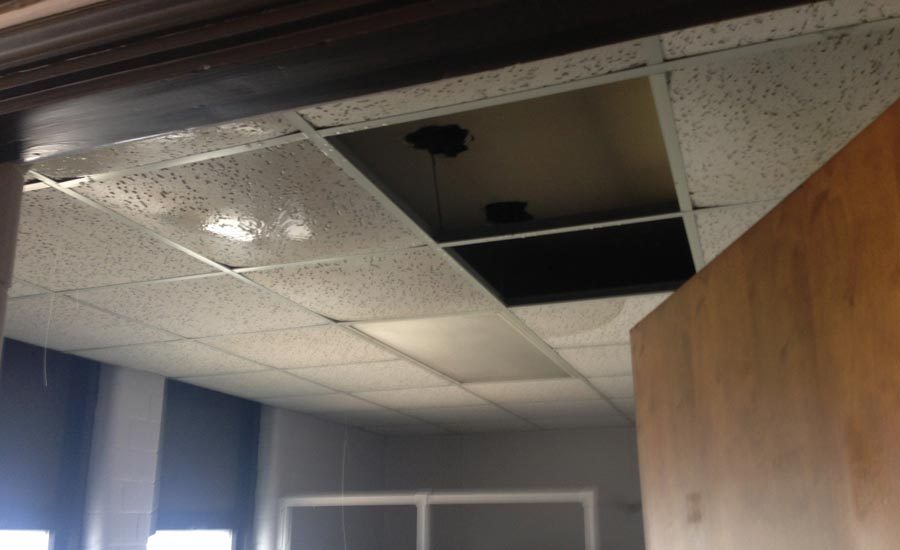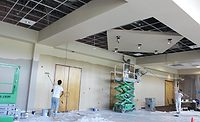Handling Critical Elements during Large Loss Restoration

Photos courtesy of Jarvis Property Restoration.

Photos courtesy of Jarvis Property Restoration.

Photos courtesy of Jarvis Property Restoration.

Photos courtesy of Jarvis Property Restoration.

Photos courtesy of Jarvis Property Restoration.

Photos courtesy of Jarvis Property Restoration.

Photos courtesy of Jarvis Property Restoration.

Photos courtesy of Jarvis Property Restoration.








Tens of thousands of documents. Months of work. Hundreds of workers displaced. Dozens of techs put to work. And working daily with local government. It was a restoration job that covered every angle of the industry: water and fire damage, asbestos, contents cleaning of electronics, documents, and furniture, and odor removal.
The 13-story Macomb County Government Building in Mt. Clemens, Mich., suffered an electrical fire in a utility shaft in mid-April of 2013. Built in the 1930’s, the building had gone through several renovations over the years and housed a plethora of county government departments including the Register of Deeds, human resources, the county sheriff’s department administration offices, the county facility department, the 911 dispatch center, computer mainframes, county-wide phone system and others.
The fire displaced 150 to 200 county employees, according to the Detroit Free Press, and took about three years to restore, renovate, and reopen for daily use.
Jarvis Property Restoration had done work for Macomb County in the past, and had an established relationship with county leadership as their emergency service contractor at the time of the fire. Jarvis crews were on scene doing mitigation work for four to five months after the fire, before the renovation process started.
Critical Needs
“Our main scope of work started with emergency services and safety concerns in the building,” explained John Ingoglia, Jarvis’ Vice President of Operations and the project manager on this job. “We worked side-by-side with the county staff to coordinate everything. We immediately did environmental and air quality testing completed, we performed water extraction and water mitigation, installed temporary electrical services to hallways and critical parts of the buildings, and established odor control because there was a lot of soot and smoke throughout the building.”
The building was without power from the start, meaning large generators had to be brought in to power all the equipment. The first few days of this job meant having a crew of about 20 people working; that quickly accelerated to 70 or more on site within just a few days.
The county didn’t allow Jarvis to gut the entire building, and the company was also unaware in the early stages of the mitigation that the county would soon decide to do full renovations anyway. So, crews tediously removed the porous materials on all 13 floors of the building – like cardboard, ceiling tiles, carpet, and other similar materials. At the same time, ozone chambers, hydroxyl machines, and air scrubbers were set up to tackle odors quickly.
Three or four floors were also partially flooded from the initial fire suppression, so water extraction was also a big part of the initial emergency mitigation.
It should also be noted that the elevator didn’t work for the first three days. So those first 72 hours of work were intense and exhausting.
Setting Priorities
Once the initial critical needs were addressed, the Jarvis team sat down with the county to establish priorities. That started with document and electronics recovery, and security.
Ingoglia says Jarvis cleaned more than 900 electronic devices and literally tens of thousands of pieces of paperwork. Documents were handled depending on the amount of damage, critical nature of the document, and other criteria. Some were freeze-dried, others were hand-wiped, and some had to just be reproduced. Every single piece was put in an ozone room to remove any odors. Crews also had to perform asbestos abatement in the elevator shaft where the fire started.
There were some initial minor snags during this process as Jarvis tried to help multiple county departments that each thought their needs should be a top priority. This is where this job differed greatly from restoring a manufacturing facility after a fire, for example. At a manufacturing facility, you likely have one or two points of contact. On this county job, in a 13 story building, there were multiple department heads who worked autonomously from one another and were all eager to get back to work.
Fortunately, county leadership had this handled, too.
“The best thing the county did, right off the bat, was declare a state of emergency on the county building,” explained Matt Jarvis, the company’s vice president. “That allowed everything to stay at the executive level with the county, and those at that level were highly organized and results-driven.”
That high level of organization was partly made possible thanks to daily meetings between county leaders, Ingoglia, Jarvis, and other key players in the restoration process. This is when a mitigation plan was put together.
“Every day, we had meetings at the county executive’s office. Communication was critical. We had real high priority areas where things got put on rush status to get them back to the county as soon as possible,” Jarvis said.
Importance of Communication
During the conversation with R&R about this job, the importance of communication between Jarvis and the county was stressed time and time again.
“The biggest thing we learned, and was reconfirmed, was the importance of communication with all parties. Macomb County is highly populated, and this building was the heartbeat of the county for the systems it housed inside,” Jarvis said. “We couldn’t make any mistakes because of the importance of the systems in that building. Organization was key. If we hadn’t known the county’s needs, we probably would have handled this a lot differently.”
Looking for a reprint of this article?
From high-res PDFs to custom plaques, order your copy today!














